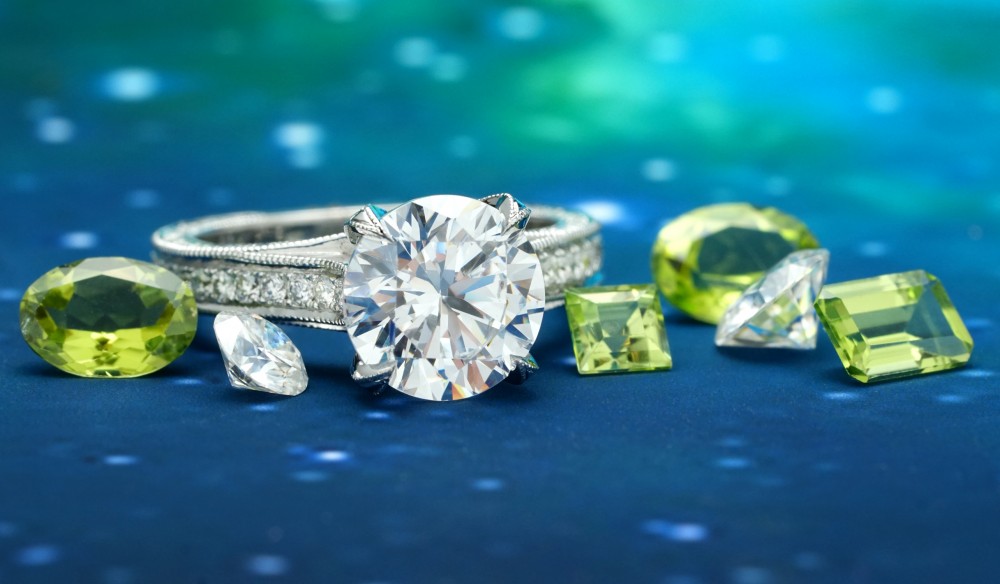The Ultimate Cheat Sheet on Gold

Gold: the symbol of wealth, immortality, beauty, and power. For the last 7,000 years, gold jewelry has been used to signify the ruling classes and communicate affluence. Today, although gold is more readily available, it is still a revered precious metal for jewelry.
 Wikipedia
Wikipedia
History
Gold has been discovered in many areas around the world, and almost every human culture has used it. The first known use of gold is from the Chalcolithic era, or Copper Age (a phase of the Bronze Age, around the 5th millenium BCE). From King Tut’s death mask to King Henry VII’s hundreds of rings, it has always been associated with the gods and immortality, and so royalty and the powerful wore gold ornamentation to signify their connection to deities.
As gold was a desirable commodity, the slaves, convicts, and prisoners of war in ancient cultures were sent to mine gold, before it was even a coinage. Gold made a world economy possible through the valuation of money against gold and silver early on when worldwide trading began.
The popularity of gold reached new heights during the Renaissance. The royal courts of Western Europe continued to outdo each other, covering themselves in jewels and gold for all occasions. The jewelry was heavy and detailed, and even young children of high class were encouraged to wear fine jewelry. Gold has provoked wars, caused entire migrations, and symbolized love and affection for hundreds of years. Although styles changed over time, today gold is still the most popular choice for fine jewelry.
Notable events, artifacts and mentions in history pertaining to gold, in no particular order:
- European exploration of the Americas
- The legend of El Dorado
- Children's fables: Rumpelstiltskin and Jack and the Beanstalk
- Top prize at the Olympic Games and other human achievements
- Treasure chests full of gold at the bottom of the ocean
- The Second Boer War in South Africa
- Gold rushes: California, Colorado, Klondike, Witwatersrand
- Common (inaccurate) belief that America's streets were paved in gold, creating the myth the America was full of riches, causing millions to immigrate
- Mythical gold riches: the Confederate gold, the Nazi gold train, the Titanic gold stash, the Seven Cities of Gold
- The Spanish Conquistadors in South America
- Finding a pot of gold at the end of the rainbow
- Gold is mentioned frequently in the Bible
- One of the oldest known maps, the Turin Papyrus Map, is a map showing an old gold mine in Nubia
 Wikipedia
Wikipedia
Measurement
Gold is measured in karats (different than carat, the weight measurement of diamonds). Karats denote the percentage of actual gold present in the metal. 24KT and 22KT are too soft for everyday wear, so most jewelry is made of 18KT or 14KT.
24 Karat: 99.9% Pure
22 Karat: 91.7% Pure
18 Karat: 75% Pure
14 Karat: 58.3% Pure
12 Karat: 50% Pure
10 Karat: 41.7% Pure

Types
To change the color of gold, yellow gold must be combined with an alloy.
Yellow gold: This is the most traditional choice for gold jewelry. It is the easiest to obtain and repair, and it is the actual color of gold as well as the base for white, rose, and green gold.
White gold: White gold is yellow gold combined with nickel alloy, and then plated with rhodium. Although white gold is beautiful, it requires replating about once a year because the yellow gold may wear through. However, since it contains more alloys than yellow gold, it is more durable. It can also come unplated, or sans rhodium, so one does not have to worry about wear or replating. The hue is slightly different, but still very beautiful. Note: "unplated" does not mean less durable. See an example of unplated white gold.
Rose gold: This has become increasing popular in recent years as a gold choice because of its pinkish tones and vintage look. It is yellow gold combined with copper alloy, and the color achieved depends on the karat (percentage of gold) in the jewelry.
Green gold: The alloy that gives green gold its nuance is silver. Sometimes copper is included as well. Green gold is not the most common choice for fine jewelry, but it has an individuality that cannot be denied.
 Joseph Jewelry - Pure gold ready to be used in jewelry.
Joseph Jewelry - Pure gold ready to be used in jewelry.
Strengths & Weaknesses of Gold
Strength: does not corrode, does not tarnish, easily worked into jewelry, Joseph Jewelry only uses recycled gold
Weakness: malleable in pure state, alloys can be an allergen, should be inspected by a jeweler if it holds a stone to make sure the prongs are still tight
Value
Just as in winning an award, gold is the highest quality metal one can purchase for jewelry. The only higher valued metal is platinum because of its scarcity and durability.
 The Guardian
The Guardian
Fun Facts
- 183,600 tons of gold exist above ground (2014)
- Consumption: 50% jewelry, 40% investments, 10% industry
- Gold is the most malleable of all metals
- The largest depository of gold is in New York City at the U.S. Federal Reserve Bank, holding 3% of gold ever mined
- All the gold in the world combined would fill about 3.3 Olympic-sized swimming pools
Quick Notes for Buying
Pure gold is too soft to use in jewelry, so it is usually mixed with alloy metals, such as copper or zinc. The more alloy there is, the more durable the jewelry will be.
For an engagement ring in gold, it is best to go with 18KT or 14KT for quality and durability.
For affordability, go with 14KT yellow gold.
When choosing a metal tone, go with your gut! Each hue has pros and cons, so go with what you like the color of best.
Ready to design a custom piece? Start here to talk to our designers.
All product shots are property of Joseph Jewelry.
Sources
http://www.ancient.eu/gold/
http://onlygold.com/Info/History-Of-Gold.asp
http://www.britannica.com/art/jewelry/The-history-of-jewelry-design

Top 4 Reasons to Propose With a Custom Engagement Ring
She's not just any girl, so don’t get her just any ring. Make it the perfect ring she'll wear forever, custom created just for her.
Guide
Gemstones From Space
A few gemstones have varieties that came from outer space via meteor or the pressure from an asteroid landing on Earth caused them to enter existence. Read on to learn about these materials!
Guide